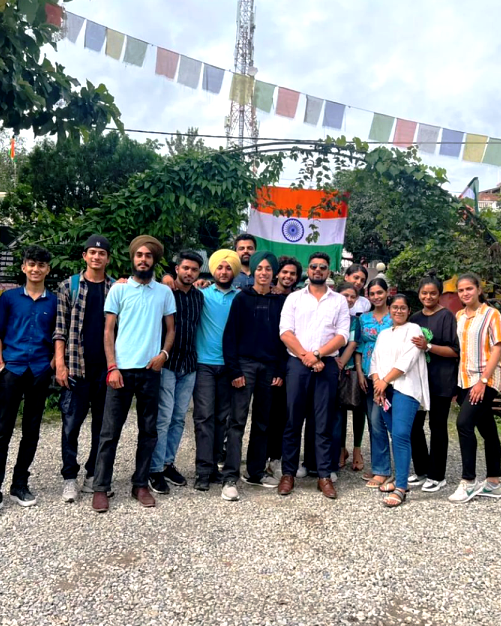Passage 1: BAKELITE
Questions 1-3: Summary completion:
[In this kind of question candidates are given a summary for one, two or three paragraphs with some fill in the blanks questions. Candidates need to find out the related paragraphs by correctly studying the keywords form the questions. Then, they should follow the steps of finding answers to fill in the gaps.]
Question no. 1: Some plastics behave in a similar way to ________. In that they melt under heat and can be moulded into new forms.
Keywords for the question: some plastics, behave, similar way, melt, under heat, can be moulded, new forms,
The answer can be found in lines 4-5 paragraph no. 2, “ . .. . Some are ‘thermoplastic’, which means that, like candlewax, they melt when heated and can then be reshaped. … . .”
Here, like = in a similar way, they melt when heated = they melt under heat, reshaped = moulded into new forms,
So, the answer is: candlewax
Question no. 2: Bakelite was unique because it was the first material to be both entirely ________ in origin, and thermosetting.
Keywords for the question: Bakelite, unique, first material, both, entirely, in origin, thermosetting,
The answer can be found in lines 5-7 in paragraph no. 2. The author says here, “Others are ‘thermosetting’: like eggs, they cannot revert to their original viscous state, and their shape is thus fixed for ever Bakelite had the distinction of being the first totally synthetic thermosetting plastic..”
Here, distinction = unique, totally = entirely,
So, the answer is: synthetic
Question no. 3: There were several reasons for the research into plastics in the nineteenth century, among them the great advances that had been made in the field of _________ and the search for alternatives to natural resources like ivory.
Keywords for the question: several reasons, research into plastics, nineteenth century, great advances, in the field of, search for alternatives, natural resources, ivory,
Paragraph no. 3 gives us the answer to this question. The writer says here, “The history of today’s plastics begins with the discovery of a series of semi-synthetic thermoplastic materials in the mid-nineteenth century. The impetus behind the development of these early plastics was generated by a number of factors – immense technological progress in the domain of chemistry, coupled with wider cultural changes, and the pragmatic need to find acceptable substitutes for dwindling supplies of ‘luxury’ materials such as tortoiseshell and ivory.”
Here, mid-nineteenth century = nineteenth century, immense technological progress = great advances, the domain of = the field of, acceptable substitutes = alternatives,
So, the answer is: chemistry
Questions 4-8: Completing FLOW-CHART with ONE WORD ONLY
In this type of question, candidates are asked to write ONE WORD ONLY to complete some notes on the given flow-chart. For this type of question, first, skim the passage to find the keywords in the paragraph concerned with the answer, and then scan to find the exact word.
[TIPS: Here, the scanning technique will come in handy. Target the keywords of the questions to find the answers. Remember to focus on Proper nouns, random Capital letters, numbers, special characters of text etc.]
N.B.: All the answers for this flow-chart can be found in paragraph no. 5 as this paragraph describes the ‘production of bakelite’.
Question no. 4: stage one resin, called _________
Keywords for the question: phenol, formaldehyde, combine, vaccum, stage one resin, called,
The answer can be found in lines 1-3 of paragraph no. 5. The writer says here, “The original patent outlined a three-stage process, in which phenol and formaldehyde (from wood or coal) were initially combined under vacuum inside a large egg-shaped kettle. The result was a resin known as Novalak, which became soluble and malleable when heated. .. ..”
Here, The result was a resin = stage one resin, known as = called,
So, the answer is: Novalak
Question no. 5: __________ (e.g. cotton, asbestos)
Keywords for the question: e.g. cotton, asbestos, catalysts,
The answer can be found in lines 5-6 of paragraph no. 5. The author says here, “. . .. . Other substances were then introduced: including fillers, such as woodflour, asbestos or cotton, which increase strength and moisture resistance, catalysts .. .. .. ”
Here, such as woodflour, asbestos or cotton = e.g. cotton, asbestos,
So, the answer is: fillers
Question no. 6: ___________
Keywords for the question: ammonia, formaldehyde,
The answer can be found in line no. 8 of paragraph no. 5. The author states here, “. . .. . hexa, a compound of ammonia and formaldehyde which supplied the additional .. … .. ”
So, the answer is: hexa
Question no. 7: ________ Bakelite
Keywords for the question: stage two resin, cool until hardened, break up, grind, powder,
The answer can be found in lines 8-10 of paragraph no. 5. The author says here, “. . .. . supplied the additional formaldehyde necessary to form a thermosetting resin. This resin was then left to cool and harden, and ground up a second time. The resulting granular powder was raw Bakelite, … . .”
Here, form a thermosetting resin = stage two resin, left to cool and harden = cool until hardened, ground up a second time = grind, resulting granular powder = powder,
So, the answer is: raw
Question no. 8: apply intense heat and _________
Keywords for the question: heat, pour into mould, apply, intense heat,
The answer can be found in lines 11-13 of paragraph no. 5. The author says here, “. . .. . In the last stage, the heated Bakelite was poured into a hollow mould of the required shape and subjected to extreme heat and pressure, thereby ‘setting’ its form for life. .. .. .”
Here, heated Bakelite was poured into a hollow mould = heat, pour into mould, subjected to = apply, extreme = intense,
So, the answer is: pressure
Question 9-10: Multiple choice questions
[This type of question asks you to choose a suitable answer from the options using the knowledge you gained from the passage. Generally, this question is found as the last question so you should not worry much about it. Finding all the answers for previous questions gives you a good idea about the title.]
Question no. 9 & 10: Which TWO of the following factors influencing the design of Bakelite objects are mentioned in the text?
Keywords for the question: TWO, factors, influencing, design, Bakelite objects,
If we look at paragraph no. 6, we can see that the writer says in lines 5-8, “. .. .. . Moulds had to be carefully designed so that the molten Bakelite would flow evenly and completely into the mould. Sharp corners proved impractical and were thus avoided, giving rise to the smooth, ‘streamlined’ style popular in the 1930s. … . .”
Here, flow evenly and completely into the mould . .. . . giving rise to the smooth, ‘streamlined’ style = ease with which the resin could fill the mould,
So, one of the answers is B (the ease with which the resin could fill the mould)
Again, in lines 2-5 of the same paragraph, the writer says, “. . .. The object could not be designed so that it was locked into the mould and therefore difficult to extract. A common general rule was that objects should taper towards the deepest part of the mould, and if necessary the product was moulded in separate pieces. . .”
Here, could not be designed so that it was locked into the mould and therefore difficult to extract = problem about removing the object, objects should taper towards the deepest part of the mould = facility with which the object could be removed from the mould,
Therefore, another answer is C (the facility with which the object could be removed from the mould)
So, the answers are: (in any order)
B (the ease with which the resin could fill the mould)
C (the facility with which the object could be removed from the mould)
Questions 11-13: TRUE, FALSE, NOT GIVEN
[In this type of question, candidates are asked to find out whether:
The statement in the question agrees with the information in the passage – TRUE
The statement in the question contradicts with the information in the passage – FALSE
If there is no information on this – NOT GIVEN
For this type of question, you can divide each statement into three independent pieces and make your way through with the answer.]
Question no. 11: Modern-day plastic preparation is based on the same principles as that patented in 1907.
Keywords for the question: modern-day plastic preparation, based on, same principles, patented, 1907,
Take a look at the last lines of paragraph no. 4 where the author of the text writes, “ . .. On 13 July 1907, Baekeland took out his famous patent describing this preparation, the essential features of which are still in use today.”
Here, essential features = principles, still in use today = modern-day plastic preparation, On 13 July 1907, Baekeland took out his famous patent = patented in 1907,
So, the answer is: TRUE
Question no. 12: Bakelite was immediately welcomed as a practical and versatile material.
Keywords for the question: Bakelite, immediately welcomed, practical, versatile material,
In paragraph no. 7, the writer says in the first line, “Baekeland’s invention, although treated with disdain in its early years, .. .. .”
Here, treated with disdain = was not welcomed, its early years = immediately,
So, the answer is: FALSE
Question no. 13: Bakelite was only available in a limited range of colours.
Keywords for the question: Bakelite, only available, limited range of colours,
Line no. 6 in paragraph no. 7 says, “. … and consumers everywhere relished its dazzling array of shades, . .. .”
Here, dazzling array of shades = unlimited range of colours,
So, the answer is: FALSE
Reading Passage 2: What’s so funny?
Questions 14-20: TRUE, FALSE, NOT GIVEN
[In this type of question, candidates are asked to find out whether:
The statement in the question agrees with the information in the passage – TRUEThe statement in the question contradicts with the information in the passage – FALSEIf there is no information on this – NOT GIVEN
For this type of question, you can divide each statement into three independent pieces and make your way through with the answer.]
Question no. 14: Arthur Koestler considered laughter biologically important in several ways.
Keywords for the question: Arthur Koestler, laughter, biologically important, several ways,
In paragraph no. 1 the author states in the last lines, “.. .. . The writer Arthur Koestler dubbed it the luxury reflex: ‘unique in that it serves no apparent biological purpose’.”
Here, serves no apparent biological purpose = biologically not important at all,
This means the question directly contradicts the text.
So, the answer is: FALSE
Question no. 15: Plato believed humour to be a sign of above-average intelligence.
Keywords for the question: Plato, believed, humour, sign, above-average intelligence,
In paragraph no. 2 the author states in lines 1-2, “ . .. . Plato expressed the idea that humour is simply a delighted feeling of superiority over others. .. .. .”
Here, we do not find any comment made by Plato in relation to intelligence.
So, the answer is: NOT GIVEN
Question no. 16: Kant believed that a successful joke involves the controlled release of nervous energy.
Keywords for the question: Kant, believed, successful joke, controlled release, nervous energy,
The answer to this question can be found in lines 2-4 in paragraph no. 2, “ . .. Kant and Freud felt that joke-telling relies on building up a psychic tension which is safely punctured by the ludicrousness of the punch line. . .. .”
Here, psychic tension = nervous energy, safely punctured = controlled release,
So, the answer is: TRUE
Question no. 17: Current thinking on humour has largely ignored Aristotle’s view on the subject.
Keywords for the question: current thinking, humour, largely ignored, Aristotle’s view,
Lines 4-6 in paragraph no. 2 gives us the answer to this question, “ .. . . But most modern humour theorists have settled on some version of Aristotle’s belief that jokes are based on a reaction to or resolution of incongruity, when the punchline is either a nonsense or, though appearing silly, has a clever second meaning.”
Here, most modern humour theorists = current thinkers, have settled on = have agreed on, some version of Aristotle’s belief = some of Aristotle’s view,
The lines suggest that current thinking on humour has agreed on some of Aristotle’s view on the subject.
So, the answer is: FALSE
Question no. 18: Graeme Ritchie’s work links jokes to artificial intelligence.
Keywords for the question: Graeme Ritchie’s work, links, jokes, artificial intelligence,
The answer can be found in paragraph no. 3. The author says here in lines 1-3, “Graeme Ritchie, a computational linguist in Edinburgh, studies the linguistic structure of jokes in order to understand not only humour but language understanding and reasoning in machines.. . .. .”
Here, studies the linguistic structure of jokes = Graeme Ritchie’s work, in order to understand = links, language understanding and reasoning in machines = artificial intelligence,
So, the answer is: TRUE
Question no. 19: Most comedians use personal situations as a source of humour.
Keywords for the question: most comedians, use, personal situations, as, source of humour,
The last lines of paragraph no. 3 talks about what a comedian does when delivering a joke, “ .. .. . A comedian will present a situation followed by an unexpected interpretation that is also apt.”
However, it doesn’t say anything about using personal situation as a source of humour.
So, the answer is: NOT GIVEN
Question no. 20: Chimpanzees make particular noises when they are playing.
Keywords for the question: chimpanzees, particular noises, when, playing,
In paragraph no.5 the author mentions the sound chimpanzees make in lines 4-5, “ . .. .. Chimpanzees have a ‘play-face’ – a gaping expression accompanied by a panting ‘ah, ah’ noise… .. .”
Here, play-face = when they are playing, a panting ‘ah, ah’ noise = particular noises,
So, the answer is: TRUE
Questions 21-23: Labeling a diagram:
[In this type of question, candidates are asked to label a diagram with NO MORE THAN TWO WORDS from the passage. Keywords are important to find answers correctly. Generally, this type of question maintains a sequence. However, we should not be surprised if the sequence is not maintained. Find the keywords in the passage and you are most likely to find the answers.]
Question no. 21: Right prefrontal cortex lights up – area of brain linked to _________
Keywords for the question: Right prefrontal cortex, lights up, area, linked to,
In paragraph no. 8, the writer says in lines 3-4, “ . .. . His scans showed that at the beginning of a joke the listener’s prefrontal cortex lit up, particularly the right prefrontal believed to be critical for problem solving.”
Here, lit up = lights up, right prefrontal = right prefrontal cortex, believed to be critical for = linked to,
So, the answer is: problem solving
Question no. 22: _________ become active too
Keywords for the question: become, active, too,
Again, in paragraph no. 8, the writer says in lines 4-5, “ . .. But there was also activity in the temporal lobes at the side of the head .. .. .”
Here, activity = become active, also = too,
So, the answer is: temporal lobes
Question no. 23: Orbital prefrontal cortex is activated – involved with ___________
Keywords for the question: Orbital prefrontal cortex, activated, involved with,
Once again, in paragraph no. 8, the writer says in lines 6-8, “.. .. . Then when the punchline arrived, a new area sprang to life – the orbital prefrontal cortex. This patch of brain tucked behind the orbits of the eyes is associated with evaluating information.”
Here, sprang to life = activated, associated with = involved with,
So, the answer is: evaluating information
Questions 24-27: Completing/Matching sentences with correct endings
[For this type of question, candidates need to match the beginning and end of sentences. Candidates need to look for keywords in the sentence-beginnings and find the relative paragraphs and then sentences in the passage. Skimming and scanning, both reading skills are essential for this question-type.]
Question no. 24: One of the brain’s most difficult tasks is to –
Keywords for the question: one of, brain’s, most difficult tasks,
The answer can be found in paragraph no. 9. In this paragraph, the writer says in lines 1-2, “Making a rapid emotional assessment of the events of the moment is an extremely demanding job for the brain, animal or human. .. .. .”
Here, Making a rapid emotional assessment of the events of the moment = respond instantly to whatever in happening, extremely demanding job = one of the most difficult tasks,
So, the answer is: C (respond instantly to whatever is happening.)
Question no. 25: Because of the language they have developed, humans –
Keywords for the question: because of, language, they, developed, humans,
The answer can be found in paragraph no. 10. In this paragraph the author writes in lines 1-4, “ . .. All warm-blooded animals make constant tiny adjustments in arousal in response to external events, but humans, who have developed a much more complicated internal life as a result of language, respond emotionally not only to their surroundings, but to their own thoughts. .. .. .”
Here, who have developed a much more complicated internal life as a result of language = because of the language they have developed, respond emotionally = react to,
So, the answer is: A (react to their own thoughts.)
Question no. 26: Individual responses to humour
Keywords for the question: individual responses, humour,
The last lines of paragraph no. 10 gives us the answer, “ . .. Whether a joke gives pleasure or pain depends on a person’s outlook.”
Here, Whether a joke gives pleasure or pain = Individual responses to humour, depends on = relate to, person’s outlook = person’s subjective views,
So, the answer is: F (relate to a person’s subjective views.)
Question no. 27: Peter Derks believes that humour –
Keywords for the question: Peter Derks, believes, humour,
The last paragraph says, “ .. . As Peter Derks, a psychologist at William and Mary College in Virginia, says: ‘I like to think of humour as the distorted mirror of the mind. It’s creative, perceptual, analytical and lingual. If we can figure out how the mind processes humour, then we’ll have a pretty good handle on how it works in general.”
Here, the mind = the brain, we’ll have a pretty good handle on how it works in general = we may get valuable information about the operation of the brain,
So, the answer is: D (may provide valuable information about the operation of the brain.)
Reading Passage 3 The Birth of Scientific English
Questions 28-34: Summary completion
[In this kind of questions candidates are given a summary for one, two, or three paragraphs with some fill-in-the-blanks questions. Candidates need to find out the related paragraphs by correctly studying the keywords from the questions. Then, they should follow the steps of finding answers to fill in the gaps.]
Question no. 28: In Europe, modem science emerged at the same time as the nation state. At first, the scientific language of choice remained _________.
Keywords for the question: Europe, modern science, emerged, same time, nation state, at first, scientific language of choice, remained,
The final lines of the first paragraph have the answer to this question. Here, the writer of the passage says in lines 12-18, “ . . .. .. Given the prominence of scientific English today, it may seem surprising that no one really knew how to write science in English before the 17th century. Before that, Latin was regarded as the lingua franca1 for European intellectuals.”
Here, no one really knew how to write science in English before the 17th century = modem science emerged at the same time as the nation state, Before that = At first, lingua franca1= scientific language of choice, (here, the number 1 with lingua franca means there’s a footnote at the end of the page to explain the phrase)
So, the answer is: Latin
Question no. 29: It allowed scientists to communicate with other socially privileged thinkers while protecting their work from unwanted exploitation. Sometimes the desire to protect ideas seems to have been stronger than the desire to communicate them, particularly in the case of mathematicians and __________.
Keywords for the question: allowed scientists, communicate, other socially privileged thinkers, protecting, work, unwanted exploitation, desire, protect ideas, seems to have been stronger, than, desire to communicate them, particularly, mathematicians,
The answer can be found in paragraph no. 6 where the author says, “A second reason for writing in Latin may, perversely, have been a concern for secrecy. Open publication had dangers in putting into the public domain preliminary ideas which had not yet been fully exploited by their ‘author’. This growing concern about intellectual property rights was a feature of the period – it reflected both the humanist notion of the individual, rational scientist who invents and discovers through private intellectual labour, and the growing connection between original science and commercial exploitation. There was something of a social distinction between ‘scholars and gentlemen’ who understood Latin, and men of trade who lacked a classical education. And in the mid-17th century it was common practice for mathematicians to keep their discoveries and proofs secret, by writing them in cipher, in obscure languages, or in private messages deposited in a sealed box with the Royal Society. Some scientists might have felt more comfortable with Latin precisely because its audience, though in national, was socially restricted. Doctors clung the most keenly to Latin as an ‘insider language’.”
Here, keep their discoveries and proofs secret = the desire to protect ideas,
So, the answer is: doctors
Questions no. 30 & 31: In Britain, moreover, scientists worried that English had neither the 30. ____________ nor the 31. ____________ to express their ideas.
Keywords for the question: thinking, numbers, concepts, separate from, physical objects,
The answers to these questions are in paragraph no.7. Let’s have a look, “A third reason why the writing of original science in English was delayed may have been to do with the linguistic inadequacy of English in the early modern period. English was not well equipped to deal with the scientific argument. First, it lacked the necessary technical vocabulary. Second, it lacked the grammatical resources required to represent the world in an objective and impersonal way, and to discuss the relations, such as cause and effect, that might hold between complex and hypothetical entities.”
Here, First, it lacked & Second, it lacked = English had neither . .. .. nor . ….. ,
So, the answers are: (in any order)
technical vocabulary
grammatical resources
Question no. 32: This situation only changed after 1660 when scientists associated with the _____________ set about developing English.
Keywords for the question: earliest tribes, sufficiency, more important, than, quantity,
Let’s have a look at paragraph no. 8. Here, the writer says in the first few lines, “Fortunately, several members of the Royal Society possessed an interest in language and became engaged in various linguistic projects. Although a proposal in 1664 to establish a committee for improving the English language came to little, the society’s members did a great deal to foster the publication of science in English and to encourage the development of a suitable writing style. Many members of the Royal Society also published monographs in English. . . .. .”
Here, in 1664 = after 1600, improving the English language = developing English,
So, the answer is: Royal Society
Questions no. 33 & 34: An early scientific journal fostered a new kind of writing based on short descriptions of specific experiments. Although English was then overtaken by 33. ___________, it developed again in the 19th century as a direct result of the 34. ____________.
Keywords for the question: Indigenous Tasmanians, used, only four terms, indicate, numbers of objects,
The answer can be traced in the final paragraph as the writer explains here, “The 17th century was thus a formative period in the establishment of scientific English. In the following century, much of this momentum was lost as German established itself as the leading European language of science. It is estimated that by the end of the 18th century 401 German scientific journals had been established as opposed to 96 in France and 50 in England. However, in the 19th century, scientific English again enjoyed substantial lexical growth as the industrial revolution created the need for new technical vocabulary, and new, specialised, professional societies were instituted to promote and publish in the new disciplines.”
Here, much of this momentum was lost .. . .. . German established itself as the leading European language of science = English was overtaken by German, scientific English again enjoyed substantial lexical growth = it developed again,
So, the answers are:
- German
- industrial revolution
Questions 35-37: TRUE, FALSE, NOT GIVEN
[In this type of question, candidates are asked to find out whether:
The statement in the question agrees with the information in the passage – TRUE
The statement in the question contradicts the information in the passage – FALSE
If there is no information on this – NOT GIVEN
For this type of question, you can divide each statement into three independent pieces and make your way through with the answer.]
Question no. 35: There was strong competition between scientists in Renaissance Europe.
Keywords for the question: strong competition, scientists, Renaissance Europe,
In the second paragraph, we find information about Renaissance in Europe and competition, “The European Renaissance (c. 14th-16th century) is sometimes called the ‘revival of learning’, a time of renewed interest in the ‘lost knowledge’ of classical times. At the same time, however, scholars also began to test and extend this knowledge. The emergent nation states of Europe developed competitive interests in world exploration and the development of trade. . .. .. “
Here, we find information about competitive interest in world exploration. However, there is NO INFORMATION about strong competition between scientists.
So, the answer is: NOT GIVEN
Question no. 36: The most important scientific development of the Renaissance period was the discovery of magnetism.
Keywords for the question: most important scientific development, Renaissance period, discovery of magnetism,
The answer can be found at the later part of paragraph no. 2 where the writer says, “ . .. .. . Such expansion, which was to take the English language west to America and east to India, was supported by scientific developments such as the discovery of magnetism (and hence the invention of the compass), improvements in cartography and – perhaps the most important scientific revolution of them all – the new theories of astronomy and the movement of the Earth in relation to the planets and stars, developed by Copernicus (1473-1543).”
Here, perhaps the most important scientific revolution of them all = The most important scientific development of the Renaissance period,
So, the most important scientific development of the Renaissance period was the new theories of astronomy and the movement of the Earth in relation to the planets and stars; NOT the discovery of magnetism.
So, the answer is: FALSE
Question no. 37: In 17th-century Britain, leading thinkers combined their interest in science with an interest in how to express ideas.
Keywords for the question: 17th century Britain, leading thinkers, combined, interest, science, an interest, how to express ideas,
The answer can be found in paragraph no. 10 and at the beginning of the final paragraph. So, our answer should be here. Let’s have a look.
“In 1665 a new scientific journal, Philosophical Transactions, was inaugurated. Perhaps the first international English-language scientific journal, it encouraged a new genre of scientific writing, that of short, focused accounts of particular experiments.
The 17th century was thus a formative period in the establishment of scientific English. ….. …”
Here, it encouraged a new genre of scientific writing, that of short, focused accounts of particular experiments = leading thinkers combined their interests in science by writing in the new scientific journal (an interest in how to express ideas).
So, the answer is: TRUE
Questions 38-40: Completing table: with NO MORE THAN TWO WORDS
[In this type of questions candidates need to fill in the gaps in a table with NO MORE THAN TWO WORDS. Skimming and scanning, both reading skills are essential for this question-type.]
| Science written in the first half of the 17th century | ||
| Language used | Latin | English |
| Type of science | Original | 38 _____________ |
| Examples | 39 _____________ | Encyclopaedias |
| Target audience | International scholars | 40 ____________, but socially wider |
Question no. 38:
Keywords for the question: English, type of science,
The answer can be found in paragraph no. 4. The writer says here, “Across Europe similar academies and societies arose, creating new national traditions of science. In the initial stages of the scientific revolution, most publications in the national languages were popular works, encyclopaedias, educational textbooks and translations. Original science was not done in English until the second half of the 17th century.
Here, national languages = English,
These lines suggest that although Original science used Latin in the first half of the 17th Century, popular science works were published in English. Original science used English in the second half of the 17th Century.
So, the answer is: popular
Question no. 39:
Keywords for the question: Latin, original, examples,
At the end of paragraph no. 4, the writer says, “ . ……. .. For example, Newton published his mathematical treatise, known as the Principia, in Latin, but published his later work on the properties of light – Opticks – in English.”
Here, For example = examples, his mathematical treatise = original work,
So, the answer is: Principia/ the Principia/ Newton’s Principia/ mathematical treatise
Question no. 40:
Keywords for the question: English, Encyclopedias, target audience, socially wider,
In paragraph no. 5, the author mentions, “ . .. . Latin was suitable for an international audience of scholars, whereas English reached a socially wider, but more local, audience. Hence, popular science was written in English.”
So, the answer is: local/ more local/ local audience








